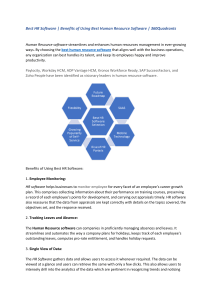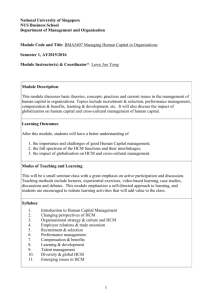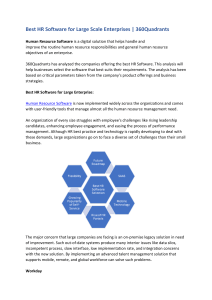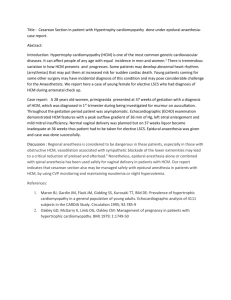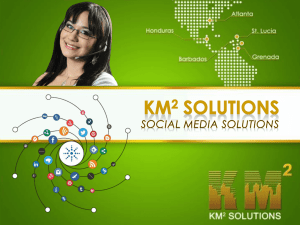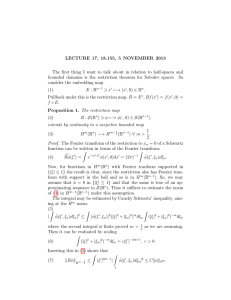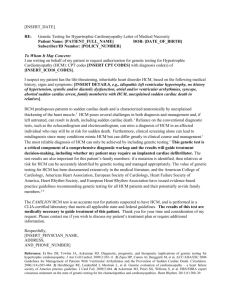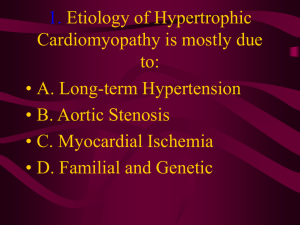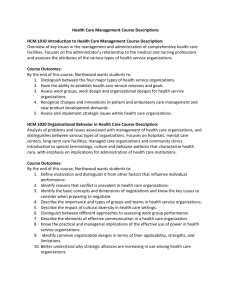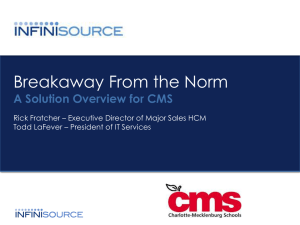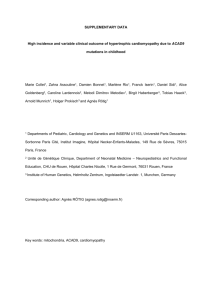Human capital management
advertisement
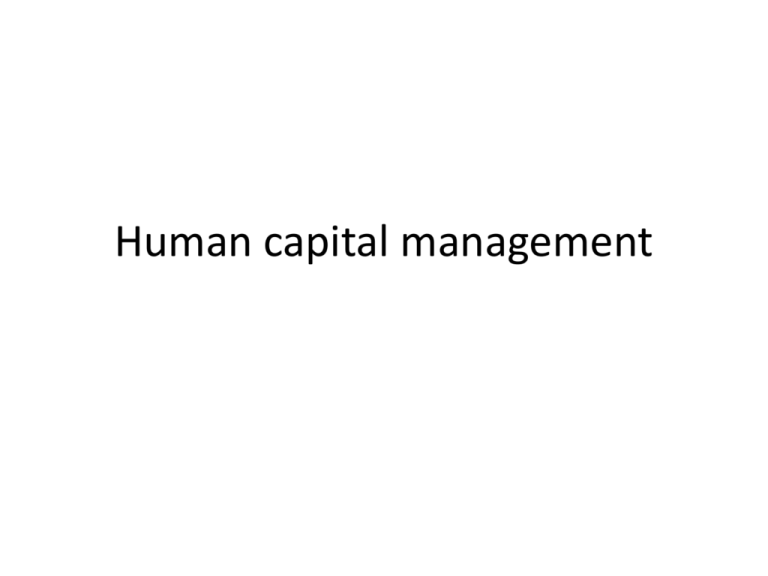
Human capital management Definition • HCM is concerned with obtaining, analysing and reporting on data that inform the direction of valueadding people management, strategic, investment and operational decisions at corporate level and at the level of front line management. • The defining characteristic of HCM is the use of metrics to guide an approach to managing people that regards them as assets and emphasizes that competitive advantage is achieved by strategic investments in those assets through employee engagement and retention, talent management and learning and development programmes. Aims of HCM • To determine the impact of people on the business and their contribution to value; • To demonstrate that HR practices produce value for money in terms (e.g. ROI). • To provide guidance on future HR and business strategies. • To provide data that will inform strategies and practices designed to improve the effectiveness of HRM in the organization. Business strategy and HCM Business drivers and HCM Human Capital • Human capital represents the human factor in the organization; the combined intelligence, skills and expertise that gives the organization its distinctive character. • The human elements of the organization are those that are capable of learning, changing, innovating and providing the creative thrust which if properly motivated can ensure the long-term survival of the organization. Intellectual and Human Capital Intellectual capital • the stocks and flows of knowledge available to an organization. These can be regarded as the intangible resources associated with people which, together with tangible resources (money and physical assets), comprise the market or total value of a business. • Bontis (1998) defines intangible resources as the factors other than financial and physical assets that contribute to the value-generating processes of a firm and are under its control. Social capital • It consists of the knowledge derived from networks of relationships within and outside the organization. The concept of social capital has been defined by Putnam (1996) as ‘the features of social life – networks, norms and trust – that enable participants to act together more effectively to pursue shared objectives’ Human capital advantage • sustainable competitive advantage is attained when the firm has a human resource pool that cannot be imitated or substituted by its rivals. Questions on people management raised by human capital theory • What are the key performance drivers that create value? • What skills do we have? • What skills do we need now and in the future to meet our strategic aims? • How are we going to attract, develop and retain these skills? • How can we develop a culture and environment in which organizational and individual learning takes place that meets both our needs and the needs of our employees? • How can we provide for both the explicit and tacit knowledge created in our organization to be captured, recorded and used effectively? Why measuring the value and impact of human capital • Human capital constitutes a key element of the market worth of a company. A research study conducted in 2003 (CFO Research Studies) estimated that the value of human capital represented over 36 per cent of total revenue in a typical organization. • People in organizations add value and there is a case for assessing this value to provide a basis for HR planning and for monitoring the effectiveness and impact of HR policies and practices. • The process of identifying measures and collecting and analysing information relating to them will focus the attention of the organization on what needs to be done to find, keep, develop and make the best use of its human capital. • Measurements can be used to monitor progress in achieving strategic HR goals and generally to evaluate the effectiveness of HR practices. • You cannot manage unless you measure. Main HCM data used for measurement • Basic workforce data – demographic data (numbers by job category, sex, race, age, disability, working arrangements, absence and sickness, turnover and pay). • People development and performance data – learning and development programmes, performance management/potential assessments, skills and qualifications. • Perceptual data – attitude/opinion surveys, focus groups, exit interviews. • Performance data – financial, operational and customer. Approaches to measurement • The human capital index • The organizational performance model • The human capital monitor Human capital index • Watson Wyatt (2002) identified four major categories of HR practice that could be linked to increases in shareholder value creation: – total rewards and accountability 16.5 % – collegial, flexible workforce 9.0 % – recruiting and retention excellence 7.9 % – communication integrity 7.1 % The organizational performance model • People, work processes, management structure, information and knowledge, decision making and rewards plays out differently within the context of the organization, creating a unique DNA. • If these elements have been developed piecemeal, as often happens, the potential for misalignment is strong and it is likely that human capital is not being optimized. • ‘Internal Labour Market Analysis’: draws on the running record of employee and labour market data to analyse the actual experience of employees. Thus gaps can be identified between what is required in the workforce to support business goals and what is actually being delivered. The human capital monitor • is to identify the human value of the enterprise or ‘human asset worth’: employment cost × individual asset multiplier. • Individual asset multiplier: a weighted average assessment of capability, potential to grow, personal performance (contribution) and alignment to the organization’s values set in the context of the workforce environment. • Absolute figure isn’t important: what does matter is to consider whether human capital is sufficient, increasing, or decreasing, and highlights issues to address. • The most critical indicator for the value of human capital is the level of expertise possessed under the headings of identified organizational core competencies. Thank you for listening!
